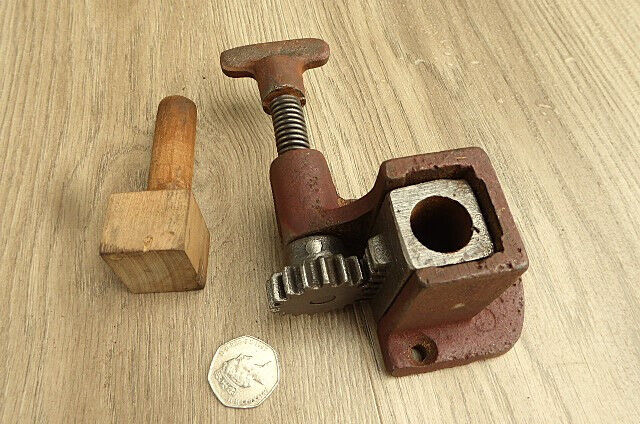Trying to get an ID on this
Heavy cast iron. Could possibly be part of something else.... or a bench dog ?



Heavy cast iron. Could possibly be part of something else.... or a bench dog ?









Still a bit puzzled by the spring under the wing nut.
Yes I believe you could partly be correct with the spring theory but even just with a decent amount of pressure it should resist any creep back down the recess.Would the spring be the part that provides friction in the mechanism, to stop it dropping under gravity or as a result of the cyclic load on it in use (when you use it as a planing stop, it only sees load on the forward stroke of the plane)?
It seems to me that you would adjust the length of the wooden part to suit the thickness of your bench top. With the rack in its lowest position, the top of the wooden part would be flush.
Edit: the 'hand' of the spring might also indicate which way is up - turning the handle one way will 'open' the spring's coils and its springiness will resist your turning. Turning the handle the other way will 'close' the coils and rotation in that direction will be easier. So the 'coil closing' (easy) direction should raise the wooden part. In effect, the spring is acting as a ratchet mechanism with an infinite number of teeth.